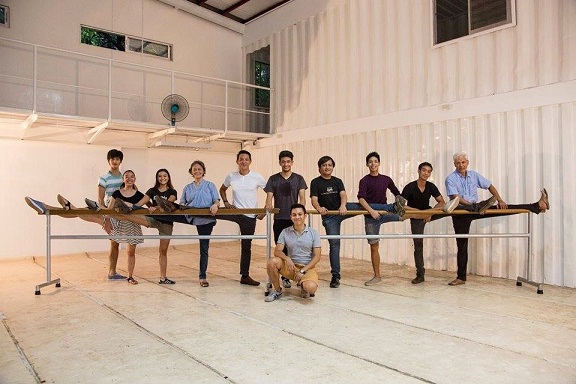
By PABLO A. TARIMAN
BALLET has a freak history in the country even as Manila saw the world-famous Russian dance icon Anna Pavlova as early as 1922.
While no one was looking, Russian dance teachers managed to find their way in Manila and in the provinces in the 40s which also saw the 1948 Manila visit of English ballerina Alicia Markova and distinguished British danseur Anton Dolin who were last seen at the FEU Auditorium in the 50s, the decade an influential figure in the Philippine Catholic clergy temporarily banned ballet in the country.
In the 60s and early 70s, the country has recovered from the ballet ban and produced its first prima ballerina in the person of Maniya Barredo who for some time was the Queen of Dance of Atlanta Ballet.
In the 80s, first rate Filipino danseurs emerged starting with Nonoy Froilan (Ballet Philippines), Nicolas Pacana (Boston Ballet and later, Atlanta Ballet) and Rey Dizon (Les Grands Ballets Canadiens).

Froilan danced with Dame Margot Fonteyn and Japanese prima Yoko Morishita while Pacana was Espada with Rudolf Nureyev in a Boston Ballet production of Don Q. At one time, Pacana substituted for an injured Mikhail Baryshnikov in one performance of Don Q in Atlanta.
Also noteworthy were Enrico Labayen who studied on full scholarship at the American Ballet Theater and Harkness Ballet and Augustus Damian who had memorable stints with Maurice Bejart’s Ballet of the 20th Century from Brussels to Lausanne (1987-1992); and Basle Ballet in Switzerland (1992).
After the new millennium, younger male dancers emerged with principal dancer status namely Rudy de Dios ( Ballet Manila) and Jean Marc Cordero ( Ballet Philippines).
What do male dancers in this country have to cope with when they decided an uncertain career in ballet?
The documentary, “Mananayaw” directed by Rafael Froilan, provided part of the answers and the result is a stirring account of glory and irony in the Philippine ballet stage.
The documentary director knows his subject inside and out as he happens to be the son of Nonoy Froilan and Edna Vida who were two of the pioneer dancers of Ballet Philippines.
Choreographer Eddie Elejar opined that the most common misconception about male dancers is that they are all gay. Truth is only a few are. But gay or not, they share a common passion for dance.
In the documentary, Ballet Philippines’ principal dancer Cordero admitted he didn’t know who Nonoy Froilan was as he arrived on the ballet scene way before the premier danseur’s time.
Apart from the inputs from Elejar, some dance personalities figured in the documentary among them Nonoy Froilan himself, his wife Edna Vida, Sofia Zobel Elizalde (formerly with Ballet Philippines now a ballet teacher), dancer Luther Perez and Dwight Rodrigazo, among others.

he loneliness of a ballet dancer is best represented by the account of contemporary dancer Biag Gaongen whose dancing career was cut short by a knee injury.
Another principal dancer in the making, Victor Manguad, reveals his uncertainties as an artist.
The documentary paints an encouraging picture of male danseurs on the rise and those who have worked hard only to find another working life not as lucrative as those enjoyed by non-dancers.
More than its varied account of the dance world is the documentary’s honesty in revealing the post-dance life of one of the country’s most revered danseur, Nonoy Froilan.
In an elaborate gala marking his formal exit in the performing arts stage, the documentary recalled the night danseur Froilan went home only to find his abode totally dark. Attending to the hectic rehearsals for the gala night that month, he overlooked his overdue electric bills. It was a mixed feeling of elation and sadness. Here he was re-living the standing ovation on his last gala night at the CCP only to be jolted by the reality that dancing couldn’t even take care of his bills.
“Mananayaw” is an honest look into the dance world and how male dancers survive the misconceptions and bias that goes with that passion for dance.
It has the entertaining quality and shock value of “Black Swan” which is about the passion and uncertainties of a ballerina.
Like it or not, the documentary might as well be “Turning Point” for retired dancers and for those who decided to give up dance in favor of raising a family and leading a “normal” life — outside of dance.
(“Mananayaw” was screened last November 7 at the CCP Dream Theater as part of the 1st CCP National Ballet Competition. It was produced for the Cine Totoo International Documentary Film Festival by a team of five filmmakers namely Rafael Froilan as director and editor with writer Beatriz Antonia Carabeo as co-writer and assistant director. Production manager is Mika Fabella with Chris Yuhico as director of photography and Patrick Gutierrez as producer and creative consultant.)

